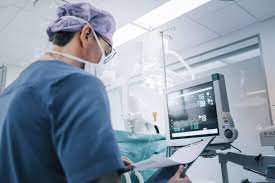
The Indian medical device market has had significant growth recently, and it is anticipated that this growth will continue in the years to come. To maintain patient safety, it is crucial to control and streamline the processes of manufacturing, importing, and distribution due to the rising demand for medical devices. The Indian Medical Device Policy attempts to accomplish this goal while guaranteeing access to affordable medical equipment to patients.
The Medical Device Policy, 2023 (Policy) notified by the government comes with an agenda to make India self-sufficient in the medical device industry which is also a part of the “Make in India” program. The policy was first introduced in 2017 and further revised in 2020 to make the regulatory framework more user-friendly.
India depends hugely on imports to source medical equipment and the policy aims to reduce this dependence. The thought behind the policy’s framework is to build an ecosystem that can support the manufacturing of such devices. The policy provides a comprehensive framework which aims to bring affordable healthcare to Indian patients and create a manufacturing regime that can manufacture cost-effective medical equipment and create employment in the healthcare sector. India is already a preferred choice for medical tourism attracting patients not only from its neighbours, but across Central Asia and South East Asia. In addition, India has witnessed a large number of incidents where faulty medical equipment has led to serious accidents such as the Hospital Ventilator fire in Mumbai, the faulty Hepatitis Kit controversy, the faulty hip implant case and the Stent Pricing Issue.
To curb such issues and to create an inexpensive but robust healthcare regime, the policy aims to bring a large number of reforms. The policy extends the single window clearance system for licensing to medical devices. This will help in unburdening the beneficiaries from multiple compliances. Secondly, the scope of BIS will also be enlarged to cater to such equipment. Reforms have also been brought about in the Pricing Regulations, Infrastructure (establishment of Medical Device Parks) and improving R&D facilities.
To bring clarity and transparency to the medical device industry, the policy included several significant reforms to the current regulatory structure. One of the most significant changes resulting from the policy is the establishment of a separate regulatory body for medical devices, the Central Drugs Standard Control Organization (CDSCO), which is entirely in charge of overseeing their regulation. The CDSCO has been tasked with issuing licences to medical device manufacturers, importers, and sellers as well as monitoring compliance with the established requirements. The regulatory procedure has been streamlined and made more effective as a result of this action.
The policy also implements a risk-based classification system for medical devices, which is a significant improvement. Based on the level of risk they pose to patients, medical devices are categorized under this system into four risk-based classes: Class A, Class B, Class C, and Class D. A device’s regulatory requirements are determined by this classification, with more rigorous regulatory requirements applying to devices that fall under higher risk categories. This action has aided in ensuring that patients are sufficiently shielded from dangerous medical devices.
The policy also provides several initiatives to support the manufacture of domestic medical devices. One such action is the implementation of a “medical devices park” scheme, which intends to establish parks specifically for the production of medical equipment. These parks will be equipped with state-of-the-art infrastructure and facilities to encourage the setting up of manufacturing units for medical devices. This action is anticipated to increase domestic medical device manufacture, lessen reliance on imports, and generate job opportunities.
The policy also offers funding and financial incentives to domestic medical device makers to further promote local manufacturing. A corpus fund of Rs 2,000 crore has been set up by the government to encourage the production of medical devices in India. To support domestic producers of medical devices, the program also includes financial incentives such as tax exemptions, subsidies, and interest rate subsidies. These policies are intended to encourage domestic medical device production and lower the cost of those products for patients.
Additionally, the policy establishes steps to guarantee the efficacy and safety of medical devices during their post-market phase. It requires the upkeep of a national medical device registry, which will keep track of every medical equipment sold in the nation. The registry will offer useful information on the effectiveness and safety of medical devices, enabling the regulatory authorities to respond quickly and effectively to any unfavourable events.
By establishing an ecosystem that fosters innovation, the policy also aims to encourage innovation in the production of medical devices. The National Medical Device Promotion Council (NMDPC), which will serve as a key agency for promoting medical device innovation and research in India, is one of the measures it introduces. This council will take steps to speed up medical device research and development as well as offer funding and incubator space to cutting-edge start-ups in the field.
Despite the measures that were taken for the policy, there were concerns that it may not be enough to create a level playing field for SMEs and start-ups in the medical devices industry. The high cost of regulatory compliance may limit the ability of start-ups and SMEs to compete with major players in the market. More actions by the government are required to encourage and support SMEs and start-ups in the medical device sector. For SMEs and start-ups, this could entail the creation of unique funding plans, financial aid, and tax exemptions.
The policy also brings certain other problems that have not been addressed. It does not address critical issues of import and its ramifications vis-à-vis the Customs Act, 1962. It is also silent on the import of capital goods or parts that get subsumed into the manufacture of capital goods and their durability. Similarly, issues pertaining to the safety of such equipment have not been dealt by the government in the policy notification. The Drugs and Cosmetics Act which is the umbrella legislation for drugs has not been addressed in the document. Lastly, the National List of Essential Medicines (NLEM) which lists all essential medicines, drugs and devices, has failed to find a place in the policy document.
Thus, the National Medical Devices Policy is a positive step towards regulating the medical device sector. The policy fosters domestic manufacture, maintains patient safety, and adds clarity and openness to the regulatory process. The regulation is a positive move in fostering the expansion of the medical device industry in India, despite concerns regarding the expense of compliance and its impact on start-ups and SMEs. The policy might unlock the full potential of the medical device industry in India and enable access to affordable and safe medical devices for all patients with the proper measures in place to stimulate innovation and offer incentives for start-ups and SMEs. However, in the end, it is important to note that the policy might look reformist in character, but all will depend on its implementation through the legislative route.


The authors are advocates and co-founders of Delhi-based Agriya Law Chambers. Tanushree Pande has over 13 years of experience in dealing with Policy and General Corporate Issues. Aditya Bhattacharya is a litigating lawyer who practises extensively in the field of Commercial Litigation and Tax Litigation.